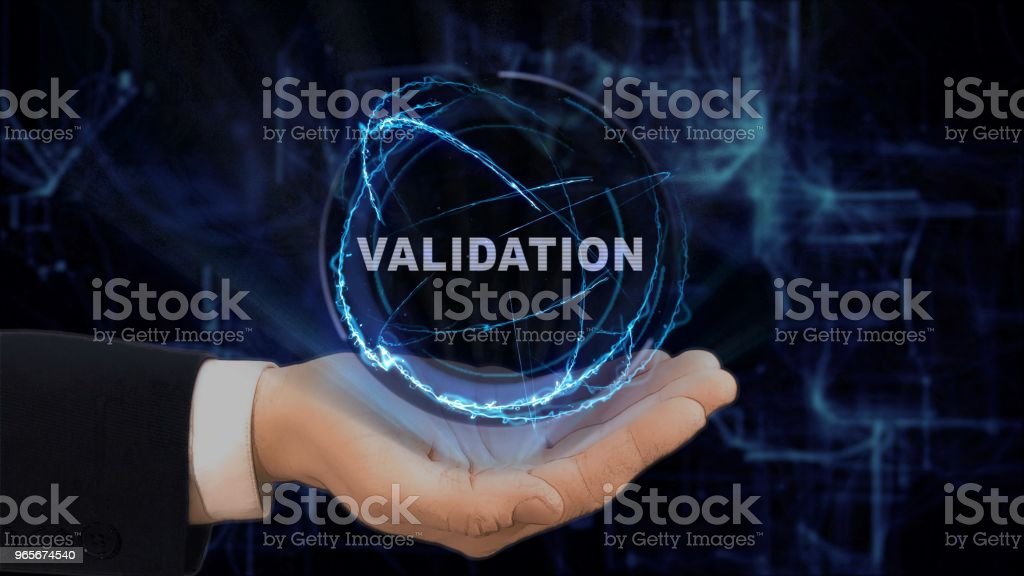Analytical development and manufacture need the creation, validation, and transfer of analytical methods.
Analytical chemistry, which encompasses procedures for identifying, separating, and quantifying the chemical components of pharmaceutical substances, is used to create methods.
In the context of early phase clinical trials, this paper gives a practical introduction to method creation and validation.
Any pharmaceutical development programme must include the creation, validation, and transfer of analytical methods. This technical brief will concentrate on drug product development and validation activities. The contribution that well-developed analytical procedures may make to the overall development time and cost efficiency of a programme is frequently overlooked.
Methodological actions are linked. They are also iterative, especially in the early stages of drug development. Parts of each procedure may happen at the same time or be refined at different stages of drug development. During drug development, changes to one method may necessitate changes to another analytical method.
Effective method development ensures that laboratory resources are maximised and that techniques achieve the goals set out at each step of drug development. Method validation is defined as the “process of establishing that analytical processes are adequate for their intended purpose,” as required by regulatory authorities at particular stages of the drug approval process. 1. The formal process of evaluating the suitability of methods in another laboratory is known as method transfer. Each of these stages helps to enhance methodologies over time, resulting in more efficient drug development.
Spectral, chromatographic, electrochemical, hyphenated, or other analytical methods could be used. The process of selecting an accurate assay procedure to identify the composition of a formulation is known as analytical method development. It’s the process of demonstrating that an analytical method is suitable for use in a lab to determine the concentration of subsequent samples. Analytical techniques should be prepared using the procedures and acceptance criteria outlined in the ICH standards and utilised in GMP and GLP environments.
Analytical procedures are used to determine a drug’s identity, purity, physical properties, and potency. Methods are created to help with drug testing against specifications during production and quality release activities, as well as long-term stability investigations.
What is the definition of analytical method development?
Analytical technique development is used to determine a drug’s identification, purity, physical features, and potency, as well as its bioavailability and stability.

The process of demonstrating that analytical processes are suitable for assessing pharmaceuticals, particularly the active pharmaceutical ingredient, is known as analytical method development and validation (API).
Analytical processes are created to compare certain features of substances to set acceptance criteria for those qualities.
As a result, analytical technique development entails evaluating and selecting the most exact assay procedures for determining a drug’s composition.
The creation and validation of analytical methods is a constant and interdependent effort that falls within the purview of the research and development, quality control, and quality assurance departments. Analytical processes are crucial in the assessment and management of equivalence and risk. It aids in the development of product-specific acceptability criteria as well as the consistency of results. Validation should show that the analytical process is appropriate for the task at hand. The design of experiments is a useful tool for characterization and validation of methods. It should be easy for analytical professionals to use it to characterise and optimise the analytical procedure. The creation and validation of an effective analytical method can result in significant gains in precision and a reduction in bias errors. It can also assist you avoid time-consuming and expensive exercises.
Why is it critical for biotech businesses performing early-stage clinical trials to establish analytical methods?
The creation and validation of analytical methods is critical for every drug development effort.
There are at least three major reasons why establishing analytical methods is crucial for every biotechnology company exploring new medication candidates.
To begin with, the quality of a medicine is clearly at the heart of a pharmaceutical research program’s success prospects, hence biotech businesses developing novel compounds must take analytical technique development extremely seriously.
Second, regulatory bodies around the world demand analytical technique validation for both clinical trial applications and marketing authorizations.
For example, a biotech business with a low-quality chemistry, manufacturing, and controls (CMC) section in its Investigational Medicinal Product Dossier (IMPD) for its medicine will have a tough time getting its clinical trials approved by European drug agencies. Then, in order to get clinical research approved, technique development is crucial.
Finally, patients will be the ones to receive the investigational medicinal product (IMP) in early phase clinical trials (first in human / Phase 1 studies), so the quality of a medicine’s development and manufacturing is critical to ensure patient safety and, hopefully, promising efficacy in new treatments.
What are some of the most prevalent analytical procedures?
Identification tests, quantitative testing for impurity content, limit tests for impurity control, and quantitative tests for the active moiety in a drug substance or drug product are the most prevalent types of analytical techniques.
What are the most important parameters in drug analytical testing?
When discussing analytical methods in drug development, it’s important to distinguish between qualitative and quantitative approaches.
Validation parameters such as specificity, limit of detection, limit of quantitation, linearity, accuracy, range, precision (under laboratory repeatable circumstances), and stability are used in compound testing methods.
Revalidation may also be required if changes are made to the drug substance’s production, the final product’s composition, or the analytical technique.
The life cycle of an analytical method
1. Characterization of a standard analyte
2. Methodological demands
3. Search the literature
4. Choosing a method
5. Instrumentation and preliminary research
6. Parameter optimization
7. Analytical figure documentation
8. Sample-based evaluation of method development
9. Calculation of the sample’s percent recovery
10. Quantitative sample analysis demonstration
The analytical chemist’s goal is to deliver data that is accurate, consistent, and dependable. Method development is a time-consuming, expensive, and difficult process. The methods and techniques required to conduct an analysis are detailed in an analytical method. Preparation of samples, standards, and reagents; use of apparatus; development of the calibration curve; application of calculation formulae, and so on.
Development and validation of analytical methods are required.
Due to international competitiveness, maintaining the standard of products in high commercial and market value, and ethical grounds, validation of analytical method development and validation became necessary. Various international regulatory agencies have established the standard and process for providing approval, authentication, and registration in accordance with the reference. The following are some well-known quality-control organisations:
1. Food and Drug Administration of the United States (US FDA)
2. Regulations on current good manufacturing practise (cGMP)
3. GLP (Good Laboratory Practice) guidelines.
4. The PIC/S (Pharmaceutical Inspection Cooperation Scheme) is a scheme that coordinates the inspection of pharmaceuticals.
5. PIC/S stands for Pharmaceutical Inspection Cooperation Scheme.
6. The International Harmonization Conference (ICH)
7. ISO/IEC 17025:2005
8. World Health Organization (WHO)
When nonstandard procedures that have been validated undergo changes, the impact of those changes should be documented, and a fresh validation should be performed. If standard techniques for a particular sample test are available, the most recent edition should be used. Validation includes defining requirements, determining method characteristics, ensuring that the requirements can be met using the method, and issuing a validity declaration.
Adopt a systematic methodology for method robustness study (creation of experiments with method parameters), followed by an initial risk assessment and multivariate experiments, to fully understand the influence of changes in method parameters on an analytical technique. Such approaches enable us to comprehend the implications of parameters on method performance. Analyses of samples acquired from in-process production stages to the end product may be used to assess a method’s performance. The results of these research on the sources of technique variation can be used to evaluate the method’s performance.
What are the major processes in developing a drug method?
In a very useful essay on pharmaceutical method creation and validation, Dr. Joanna Greenhough states the following about the lifecycle of an analytical method:
“When a pharmaceutical business or a contract analytical testing facility recognises a need for a new analytical technique, the lifecycle of that method begins.
They will then either find an existing/standard approach that is suitable for the situation or build a whole new way.
After the development stage, a validation (or verification) plan will be created, and method validation trials will be carried out.
The validation process should be guided by a validation protocol that clearly defines the method’s application purpose and scope, performance characteristics with acceptance criteria, validation experiments, standards, and reagents.
The standard operating procedures (SOPs) for the routine execution of the method must be created and approved once the analytical method validation validates the method’s fitness for its intended purpose.
The criteria for revalidation and the type/frequency of system suitability tests and QC checks should be set since the analytical technique should be continuously checked for its fitness for purpose throughout its lifecycle.
The analytical process can be used for routine analysis if the validation report is successfully submitted.
If changes to the method are made, it is critical to assess their impact on the procedure’s fitness for its intended use.
No further validation is required if modifications to the analytical method are covered by current validation.
Any modifications that go beyond the boundaries of existing validation may require revalidation or, in certain cases, method redevelopment and new validation.”
Validation Elements
Validation of an analytical method is essential throughout the regulatory submission process to establish the scientific soundness of the measurement or characterization. Validation proves that an analytical method measures the correct substance, in the right amount, and in the right range for the samples it’s supposed cheval It enables the analyst to comprehend the method’s behaviour and determine the method’s performance limits. The endnotes contain a list of information sources and methods for method validation.
To undertake method validation, the laboratory should follow a written standard operating procedure (SOP) that outlines the operation. The laboratory should use qualified and calibrated instrumentation and follow a standard operating procedure. The laboratory should use qualified and calibrated instrumentation and follow a set of operational procedures. Prior to conducting any validation trials, a well-developed and documented test technique should be in place, as well as an approved procedure. The protocol is a plan that outlines which method performance characteristics will be checked, how the parameters will be evaluated, and what acceptance criteria will be used. Finally, the validation investigations require API or drug product samples, placebos, and reference standards.
Analytical instrument qualification (AIQ), analytical technique validation, system appropriateness testing, and quality control checks are all used to ensure data quality. The purpose of validation of an analytical method is to show that it is suitable for its intended usage. The approach is generally validated under the following conditions:
1. Throughout the method’s development
2. Verifying the suitability of the system
3. Application, environment, and analyst changes
4. When used for an extended period of time
5. Verifying consistency and dependability
The kind and scope of the validation studies required will be determined by the method and analytical technique used. Identification, assay, and impurity determination are the most prevalent validation procedures.
The validation study’s findings are detailed in the validation report. Its objective is to offer information about the features that were examined during the study, the results obtained, and how those results were interpreted. A validation report typically contains the following information:
1. The validation procedure.
2. Analytical technique
3. The parameters for validation
4. The outcomes
5. Results analysis and interpretation
6. Validation data that is relevant
7. Information on the source materials
8. Batch number information
9. Information about the study’s equipment
Validation Criteria
The scientific soundness of the measurement or characterization is demonstrated by the validation of an analytical method. Throughout the regulatory filing process, it is required to varied degrees. Validation shows that an analytic method measures the proper material, in the correct amount, and in the correct range for the samples. It enables the analyst to comprehend the method’s behaviour and determine the method’s performance limits.

To undertake method validation, the laboratory should follow a written standard operating procedure (SOP) that outlines the operation. Instrumentation in the laboratory should be qualified and calibrated. Prior to validation, there should be a well-developed and documented test procedure as well as an approved protocol.
The procedure is a step-by-step guide that outlines which technique performance characteristics should be checked, as well as how the parameters will be evaluated using acceptance criteria. To execute validation trials on an API or drug product, placebos and reference standards are required, just as they are in pharmaceuticals.
The degree of agreement between the values found is defined as accuracy. The value that is considered a conventional true value or a reference value. There are several methods for determining accuracy. It can be screened by applying an analytical technique to a known-purity analyte and comparing the results of the proposed analytical procedure to those of a second recognised procedure whose accuracy is declared and defined.
What is the definition of analytical method transfer?
“Transfer of analytical procedures (TAP), also known as method transfer, is a documented process that certifies a laboratory (the receiving unit) to use an analytical test procedure developed by another laboratory (the transferring unit), ensuring that the receiving unit has the procedural knowledge and ability to perform the transferred analytical procedure as intended.”
The transfer of an analytical method is usually governed by a protocol that specifies the parameters to be evaluated as well as the specified acceptance criteria that will be applied to the results.
Two or more laboratories (originating and receiving labs) execute the pre-approved transfer protocol in most transfer investigations.
When preparing method development data in early phase clinical trials, what regulatory guidelines must be considered?
The International Council for Harmonisation of Technical Requirements for Pharmaceuticals for Human Use (ICH), the US Food and Drug Administration (FDA), and the European Medicines Agency have all released recommendations for the development and validation of pharmaceutical methods (EMA).
ICH guidelines are referred to by both the FDA and the US Pharmacopoeia (USP).
Analytical procedures must, of course, be validated in accordance with good manufacturing practise (GMP) and good laboratory practise (GLP) guidelines.
What types of businesses can assist me in developing analytical methods?
There are companies that specialise in developing and validating analytical methods for novel medications.
Contract development and manufacturing firms are the popular names for these businesses (CDMOs).
Sofpromed has laboratories throughout the United States and Europe that can provide these services.
Conclusion
The development and validation of analytical methods are ongoing and interrelated operations that occur throughout the drug development process. Validation ensures that a given technique measures a parameter as intended and establishes the measurement’s performance bounds. Validated procedures deliver findings within recognised uncertainties, despite their apparent contradictions. These findings are critical for continuing therapeutic development since they define the product’s evolving knowledge base.
The amount of time and effort spent creating scientifically sound, robust, and transferable analytical procedures should correspond to the stage of drug development. Method validation resources must be continually balanced against regulatory requirements and the likelihood of product commercialisation.
The invention, validation, and transfer of analytical methods are critical parts of drug development.
For commercial, regulatory, and patient safety reasons, method development is crucial for a biotech company.
Clinical trials and marketing authorizations cannot be approved or given without high-quality technique development and validation.
Having the help of a capable CDMO ensures the success of a drug development programme, at least in terms of CMC issues.


